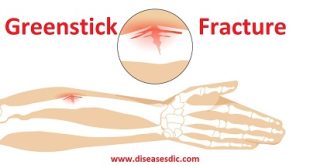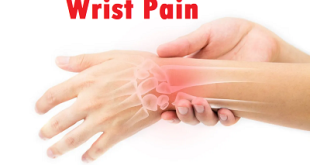What Is Dactylitis Psoriatic Arthritis?
Dactylitis is the clinical name for when your fingers and toes are swollen, tender, warm, and inflamed due to a psoriatic arthritis (PsA) flare-up or an associated condition. The name comes from the Greek word for finger (“dactylos”).
With dactylitis, your fingers can become so swollen that they look like sausages, which is why this condition and characteristic symptom is sometimes referred to as “sausage fingers” or “sausage digits.” Swelling in the toes can make it difficult to get around.
What are the causes and risk factors of dactylitis?
Dactylitis is a feature of the conditions listed below.
Infection
Blistering distal dactylitis
- Superficial infection of the anterior fat pad of the distal portion of the finger(s)
- Most often occurs in children.
- Most commonly caused by group A beta-haemolytic streptococcus but also may be due to Staphylococcus aureus.
Tuberculous dactylitis
- A rare manifestation of extra-pulmonary tuberculosis
- A variant of tuberculous osteomyelitis affecting the short tubular bones of the hands and feet.
- Radiological findings show a central, lytic, cystic, and expansive lesion known as spina ventosa.
Syphilitic dactylitis
- A manifestation of congenital syphilis.
- Similar features as tuberculous dactylitis but involvement is bilateral and symmetrical.
Spondyloarthritis
- It is a common feature in all forms of spondyloarthropathy, including psoriatic arthritis, reactive arthritis and ankylosing spondylitis.
- Dactylitis occurs in about one-third of patients with psoriatic arthritis, with the feet being most affected.
- Dactylitis is a marker of disease severity in psoriatic arthritis.
Gout
- Dactylitis can be found in up to 5% of people with gout, arthritis due to deposition of urate crystals.
Sarcoidosis
- Occurs in about 0.2% of patients with sarcoidosis, and often associated with lupus pernio (large bluish-red and dusky purple infiltrated nodules and plaque-like lesions on nose, cheeks, ears, fingers and toes).
- Bone and soft tissue involvement of the fingers classically presents as bilateral, fusiform or sausage-shaped swellings.
Sickle-cell dactylitis
- Also known as hand-foot syndrome
- Occurs in patients with sickle-cell anaemia, most frequently for the first time within the first four years of life
- In many cases, dactylitis is the first sign of the presence of the blood disorder and often leads to the diagnosis of sickle-cell disease.
- Sickle-cell dactylitis is often mistaken for other diseases, especially acute osteomyelitis, cellulitis, leukaemia, and rheumatic fever.
Importantly, dactylitis is not considered a typical feature of rheumatoid arthritis or osteoarthritis.
Signs and Symptoms of Dactylitis
Dactylitis in PsA, a chronic, inflammatory disease of the joints that can also cause a skin disorder called psoriasis, often occurs asymmetrically, meaning on just one side of the body. It involves the feet more than the hands, and it affects multiple digits (fingers or toes) at the same time.
It is common in 16%–49% of people who experience psoriatic arthritis. It can be the first sign of the illness, and it may also be the only symptom for several months or years before other symptoms of PsA develop.
Symptoms in affected fingers or toes include:
- Inflammation
- Swelling
- Redness
- Stretched or shiny appearance to the skin
- Pain
- Warmth
Dactylitis complications
For people with PsA, dactylitis is a marker of the disease’s severity. Finger and toe joints with dactylitis may have significantly more damage than joints without it.
It may indicate other health risks as well.
The risk of a future cardiovascular event such as a heart attack or stroke increases by 20% for each finger or toe with dactylitis, according to a 2016 study of adults with PsA.
How dactylitis is diagnosed?
Dactylitis has many underlying causes. A doctor may order many different tests before making a diagnosis.
When you visit a doctor, make sure you have a list of:
- your symptoms
- medications
- key medical and personal information
You may also want to check whether anyone in your family has had similar issues. This information can help your doctor make a proper diagnosis.
PsA can often go undetected. Inflammation caused by PsA can be misdiagnosed as another type of arthritis such as RA, osteoarthritis, or gout.
Inflammation caused by arthritis can cause serious damage to your body. Improperly treated arthritis can lead to permanent joint deformity and loss of function.
Testing may include:
- looking for swollen joints, fingernail irregularities, and tender feet
- imaging tests, such as X-rays, MRI, or a musculoskeletal ultrasound (MSK), which provides pictures of your joints, ligaments, and tendons
- laboratory tests such as a joint fluid test to rule out gout or a blood test to rule out RA
In 2020, researchers created a new ultrasound scoring system called Dactylitis Global Sonographic to help determine the severity of dactylitis in the hands of people with PsA and to better assess the response to treatment.
With this system, which is primarily used in clinical trials, people are given a score from 0 to 25 for each hand. The score is calculated by adding the scores for each lesion of every affected finger, based on the results of an MSK.
Treatment for Dactylitis (Sausage Fingers)
Everybody gets swollen fingers or toes sometimes. When your fingers or toes are so puffy that they look like sausages — and they hurt, too — you need to see your doctor. You could have a type of inflammation called dactylitis, or sausage digits. It can damage your fingers if you don’t get the right treatment.
It is common in certain types of inflammatory arthritis, including psoriatic arthritis and ankylosing spondylitis. It’s considered a hallmark of psoriatic arthritis. It can also show how severe a case of psoriatic arthritis will be. Fingers and toes usually don’t swell like this when you have rheumatoid arthritis or osteoarthritis.
Unless you have psoriatic arthritis or a high risk for inflammatory arthritis, your swollen fingers or toes probably have a different cause. Salty food, extra weight, and certain medications can make your fingers swell. So don’t assume the worst if you can’t get your ring off. But do pay attention to your swelling. Dactylitis usually won’t go away on its own.
Nonsteroidal Anti-inflammatory Drugs (NSAIDs)
The first drug your doctor recommends for dactylitis will probably be a nonsteroidal anti-inflammatory drug, or NSAID. These medications ease swelling and pain.
Some, like ibuprofen (Advil, Midol, Motrin) and naproxen (Aleve), are available over the counter. Others are prescription-only. Here are a few of many examples:
- Meloxicam (Mobic)
- Nabumetone (Relafen)
- Sulindac (Clinoril)
While NSAIDs can ease some symptoms, they often don’t do enough to address the problem. You may need stronger medications.
Cortisone Shots
Cortisone shots (injections of corticosteroids) typically come after NSAIDs. They send powerful medicine directly into affected joints to relieve pain and swelling. Your doctor may use ultrasound or a type of X-ray called fluoroscopy to guide the needle.
Like all drugs, these shots can have side effects. They include:
- Cartilage or nerve damage
- Death or thinning of nearby bone
- Joint infection
- Tendon problems
Because of the potential side effects, you shouldn’t get cortisone shots often. If your dactylitis doesn’t go away, you may need something stronger still.
Disease-Modifying Antirheumatic Drugs (DMARDs)
Some doctors prescribe disease-modifying antirheumatic drugs for dactylitis. These drugs target the underlying disease to slow or stop joint damage. They may also ease some symptoms.
DMARDs used for dactylitis include:
- Cyclosporine
- Leflunomide
- Methotrexate
- Sulfasalazine
DMARDs are powerful drugs used for many types of inflammatory arthritis. But even they may not be enough to tame the inflammation in your fingers and toes.
Biologics
If your fingers or toes remain swollen despite attempts at treatment (the doctor will call this resistant dactylitis), it may be time to try a biologic drug. These medications also target the underlying disease. They could be your best option to control dactylitis when nothing else works. You can take them with or without DMARDs. You get biologics as shots or in a vein (IV).
Older biologic drugs are known as tumor necrosis factor-alpha (TNF-alpha) inhibitors. A recent review of the medical literature showed these medications, as well as newer biologics, significantly improved dactylitis. This gives you and your doctor several drug options to discuss. In this review, the three biologic drugs that showed the most promise for dactylitis were:
- Certolizumab pegol (Cimzia)
- Infliximab (Remicade)
- Ustekinumab (Stelara)
Your doctor might also try:
- Ixekizumab (Taltz)
- Secukinumab (Cosentyx)
Are there Natural Remedies?
You may be tempted to reduce the swelling in your fingers and toes with natural or home remedies. It would be wise to check with your doctor first. Dactylitis may be a hallmark of psoriatic arthritis, but it also happens in other diseases, including:
- Tuberculosis
- Syphilis
- Gout
- Sarcoidosis, but this is rare
You’ll want to know exactly what’s wrong so you can make the best decision about treatment.
Cold therapy is usually a safe home remedy for warm, painful, swollen fingers. An ice pack, a bag of frozen vegetables, even a bowl of cold water can temporarily reduce these symptoms.
Outlook
With prompt treatment, the outlook for dactylitis tends to be good. The pain and swelling typically go away following treatment of the underlying condition. In the case of sickle cell-related dactylitis, the swelling usually goes away on its own.
However, many causes of dactylitis are incurable chronic conditions. These conditions may require ongoing treatment and management. If treatment stops working, dactylitis can reoccur.
People with psoriatic arthritis may have multiple dactylitis flare-ups as the condition progresses. Careful management and monitoring can reduce the severity of dactylitis and may prevent it from returning.
Because many of the conditions that cause dactylitis are serious, it is vital that a person contacts a doctor as soon as possible for swollen fingers.
 Diseases Treatments Dictionary This is complete solution to read all diseases treatments Which covers Prevention, Causes, Symptoms, Medical Terms, Drugs, Prescription, Natural Remedies with cures and Treatments. Most of the common diseases were listed in names, split with categories.
Diseases Treatments Dictionary This is complete solution to read all diseases treatments Which covers Prevention, Causes, Symptoms, Medical Terms, Drugs, Prescription, Natural Remedies with cures and Treatments. Most of the common diseases were listed in names, split with categories.







